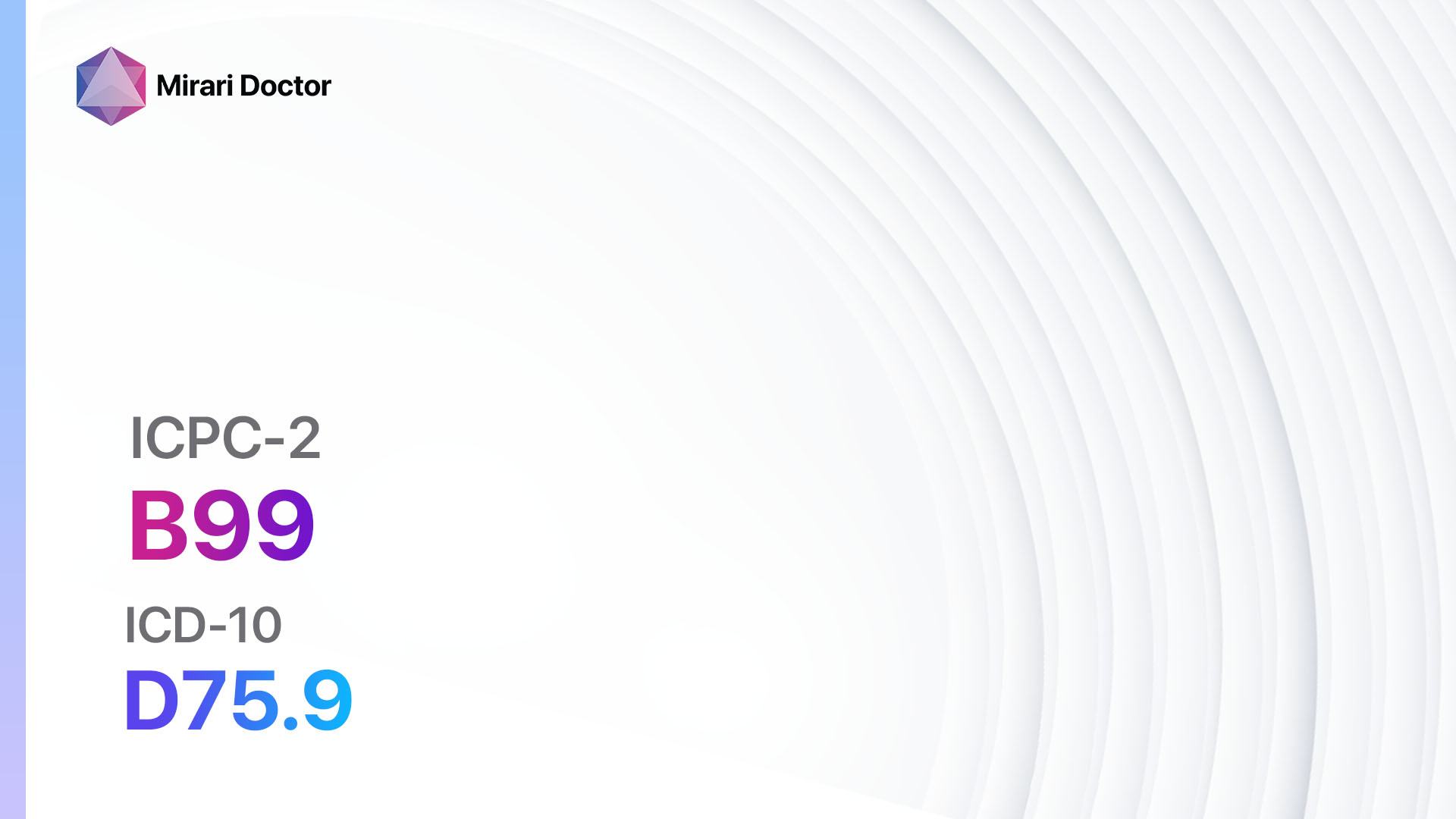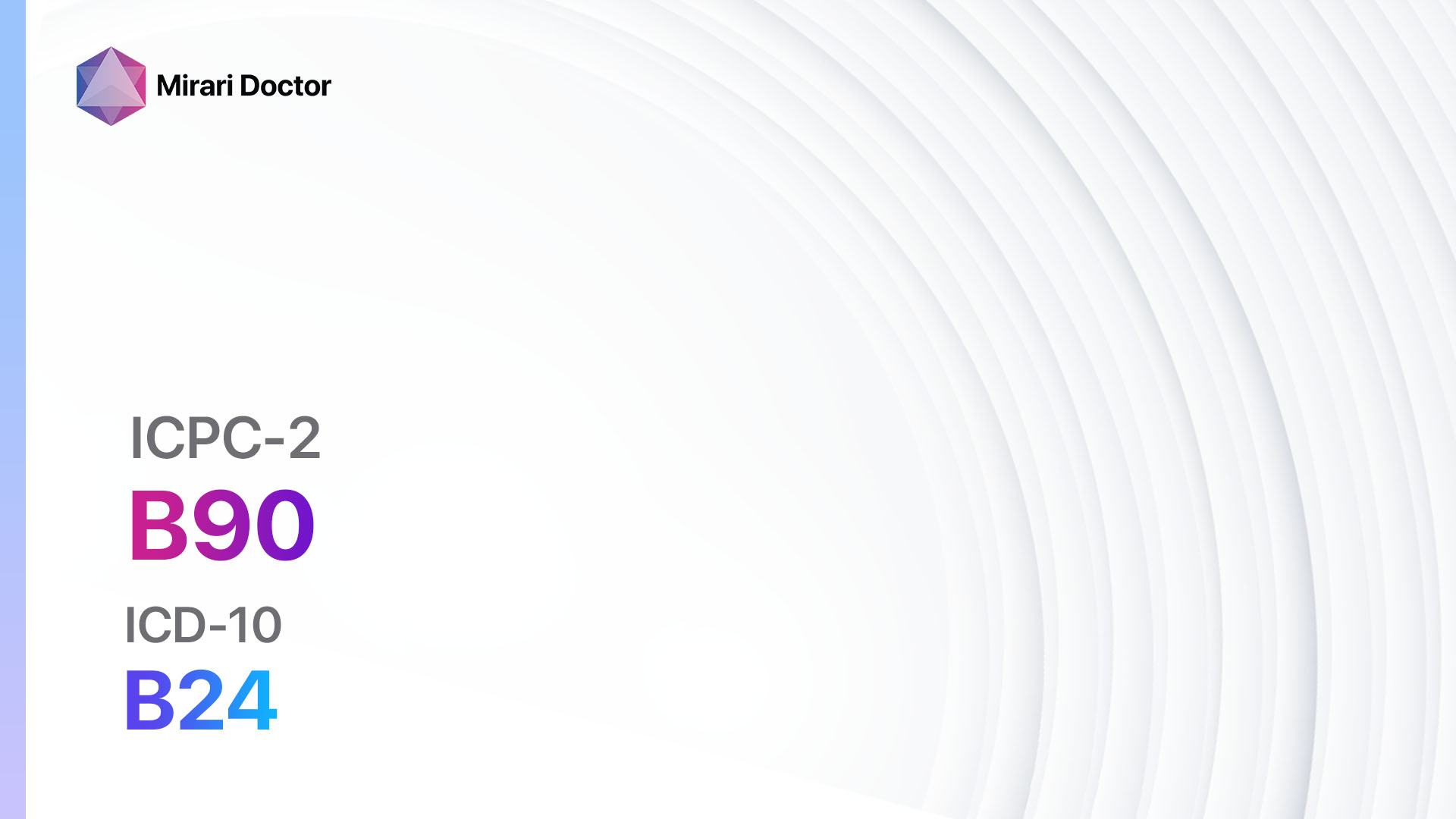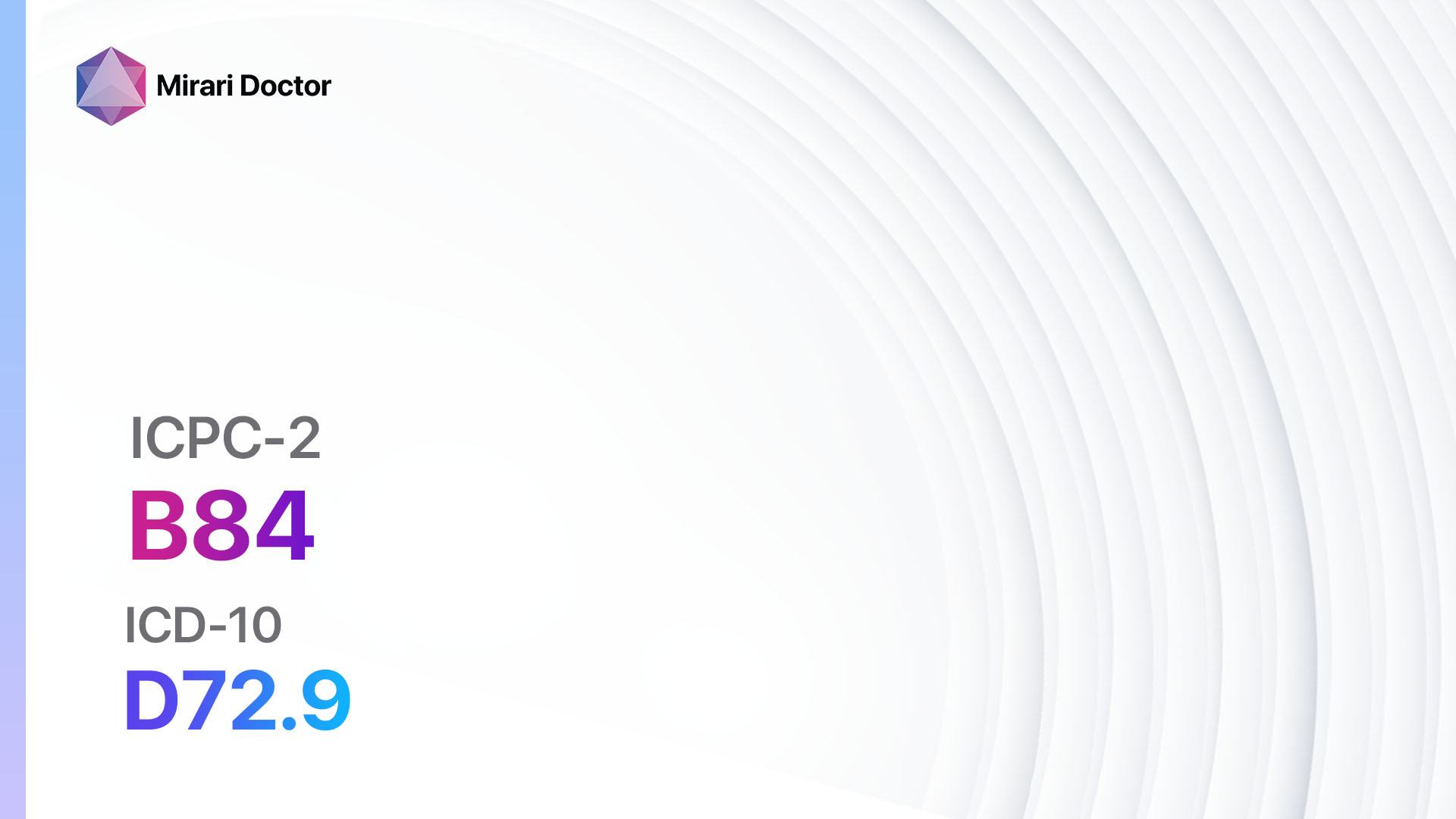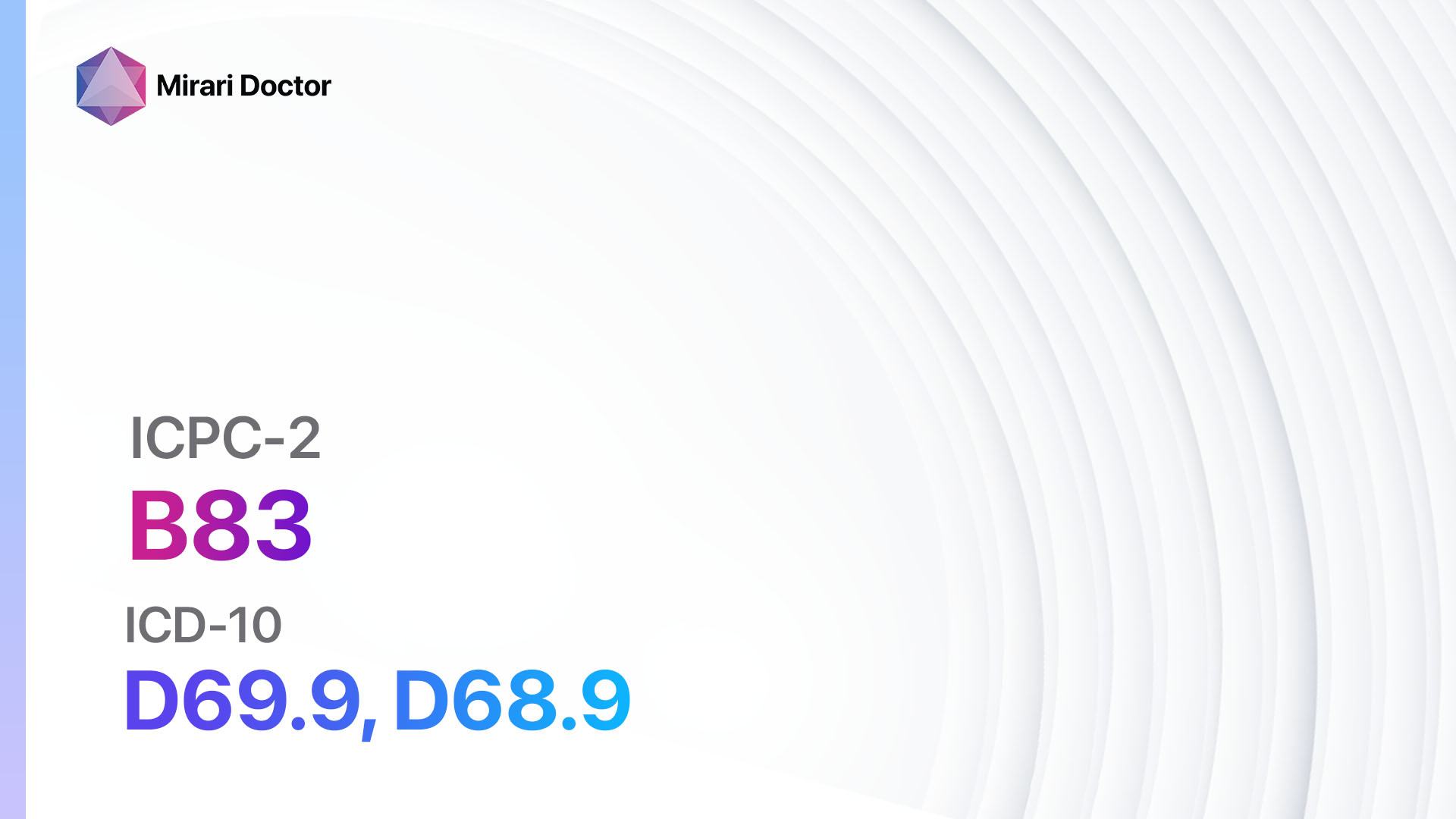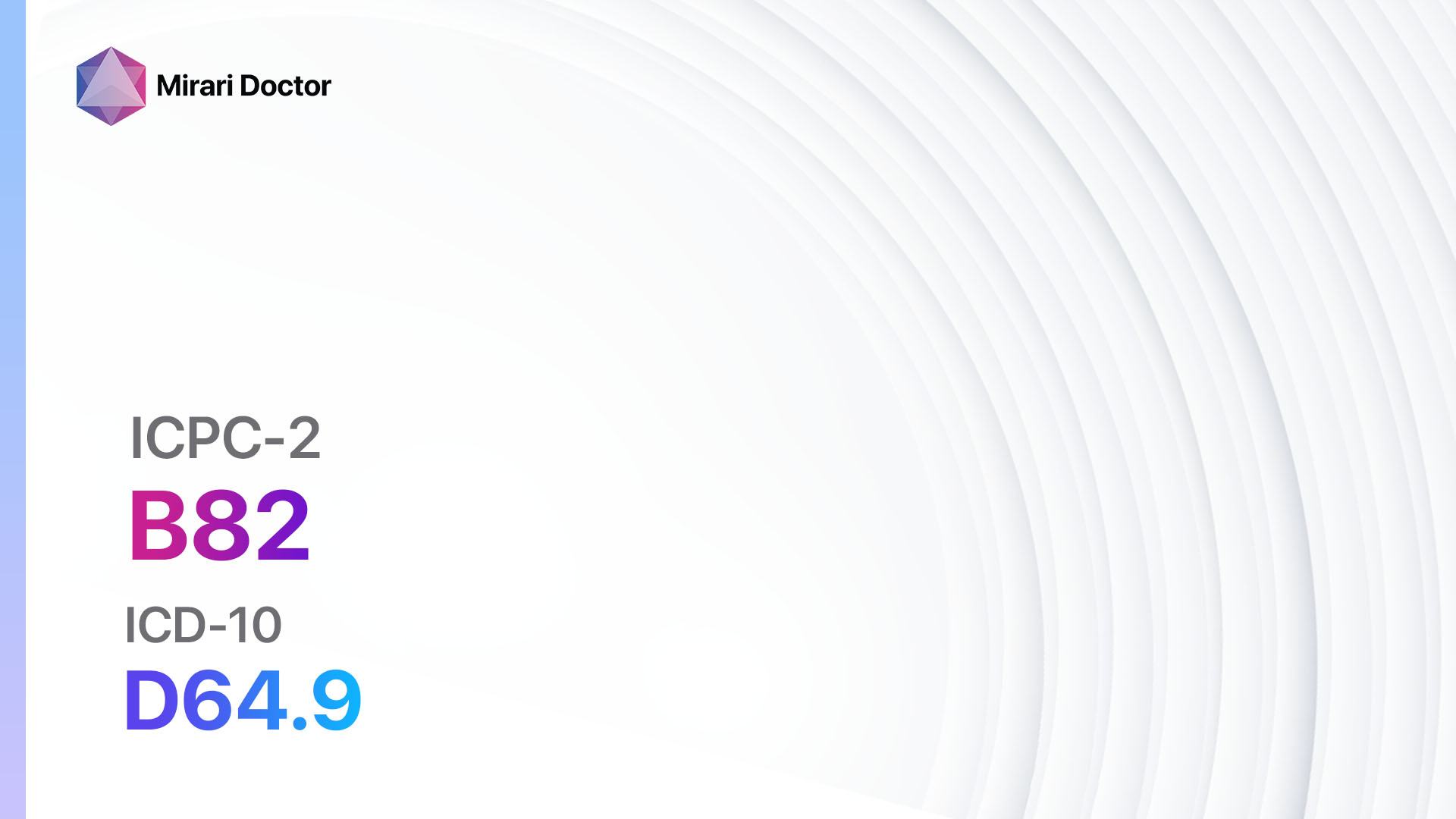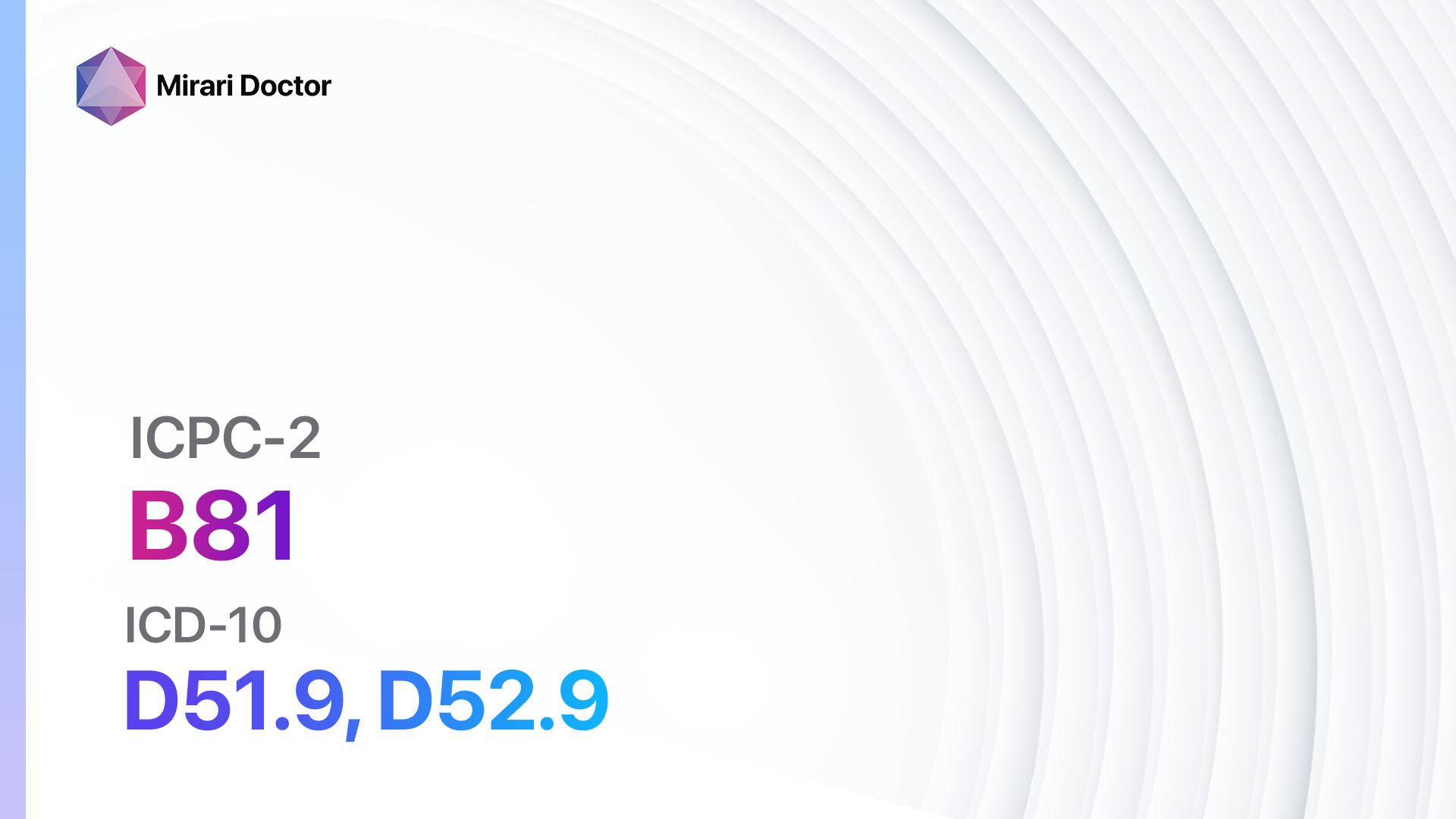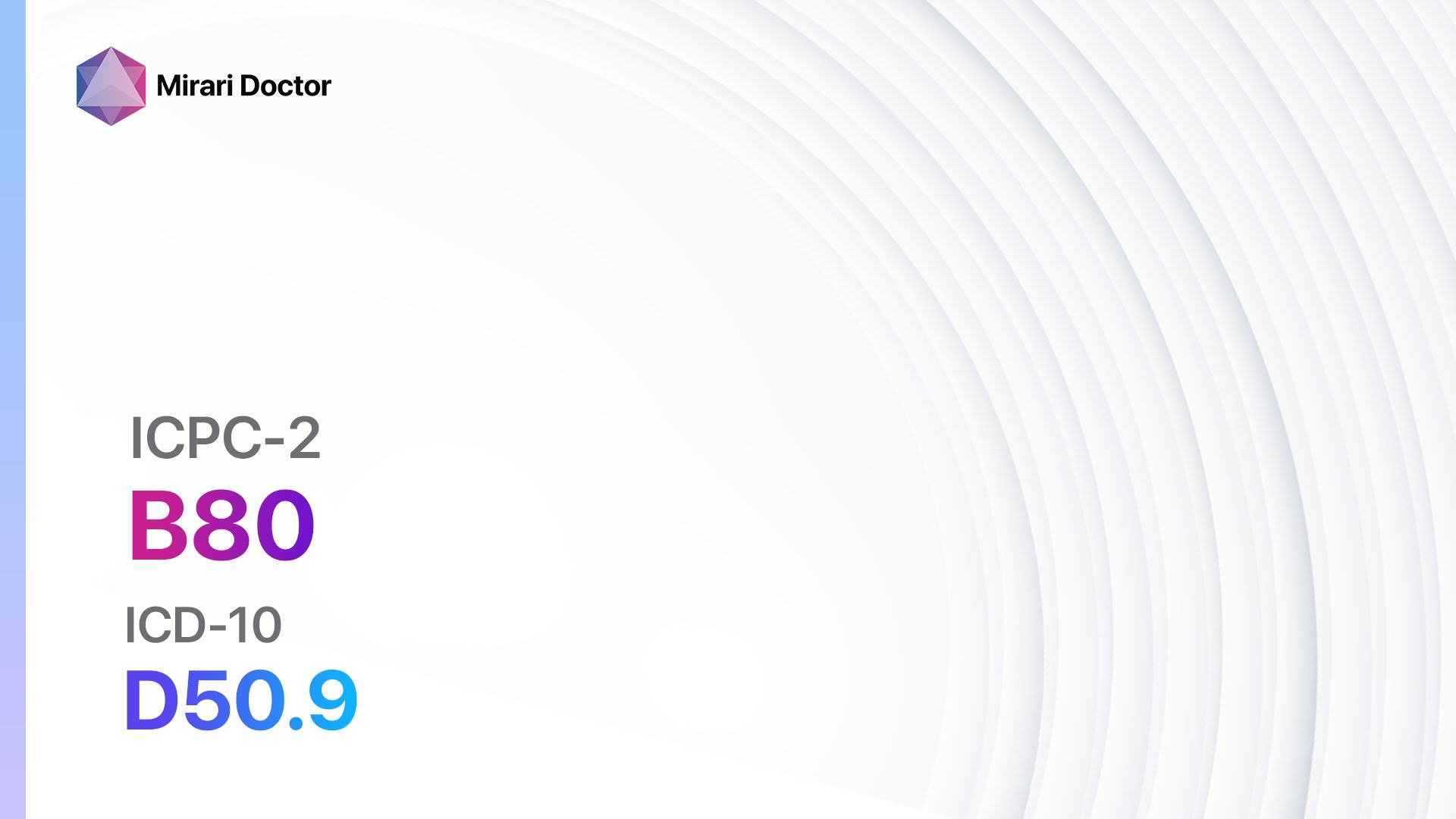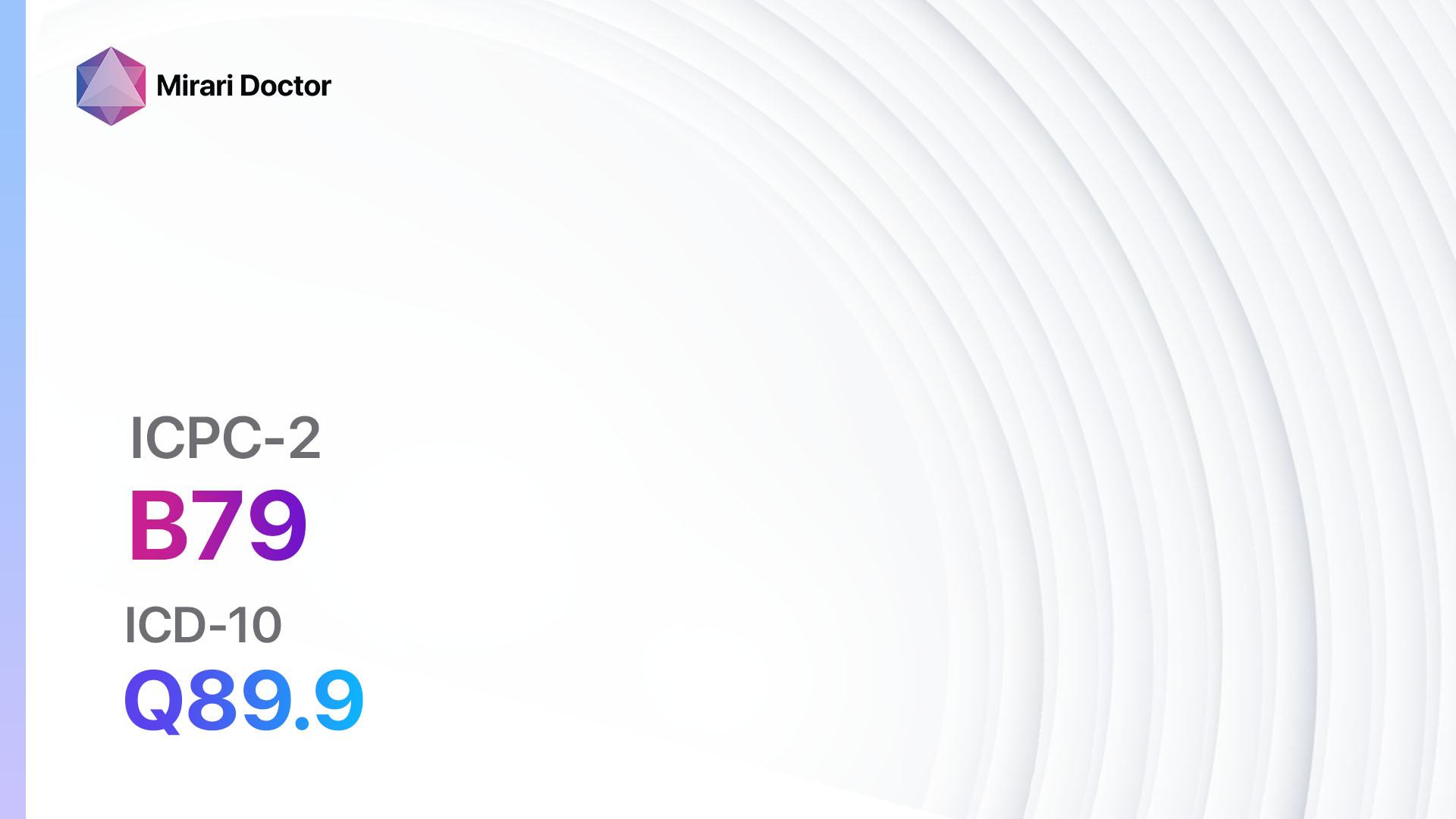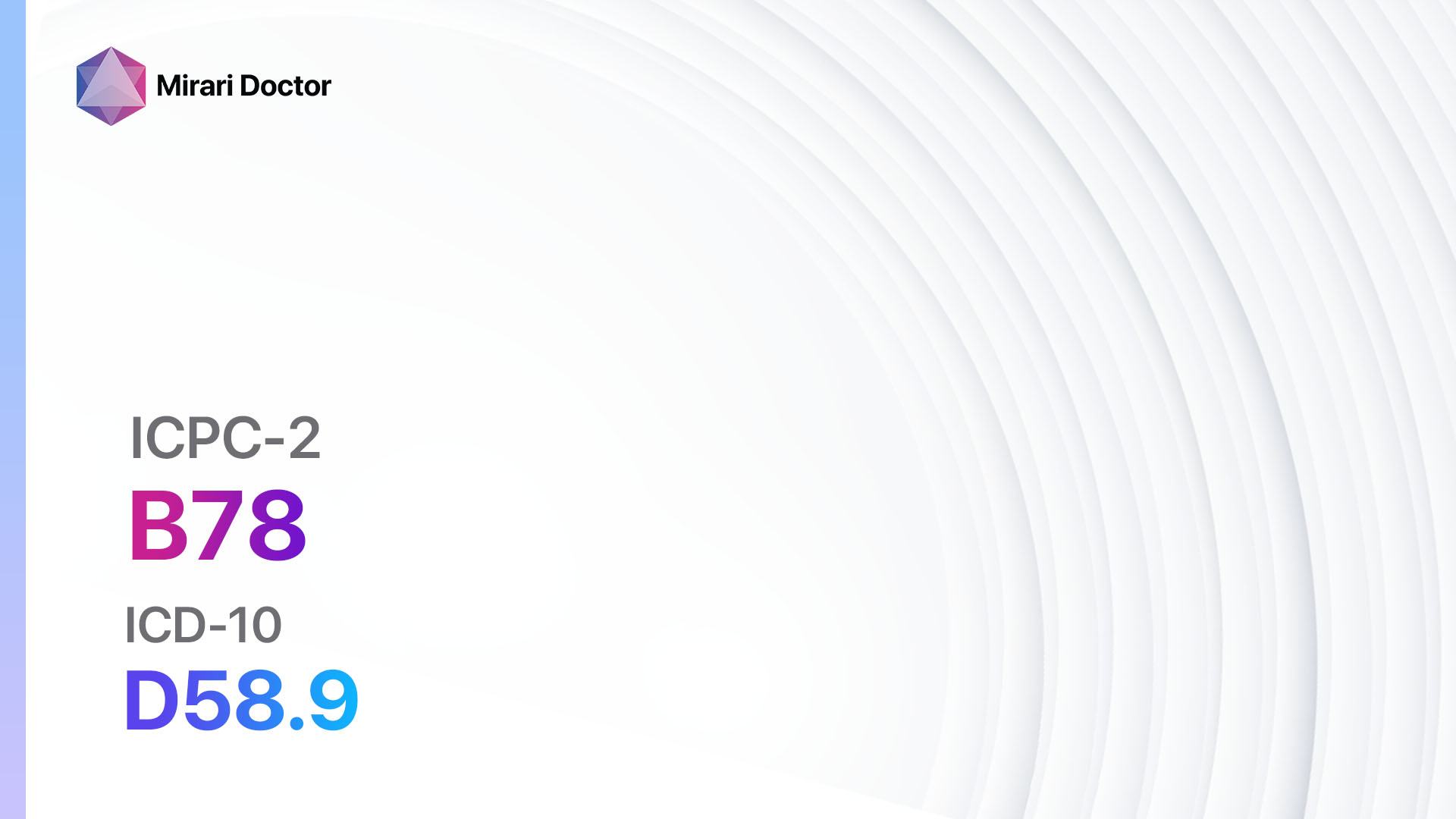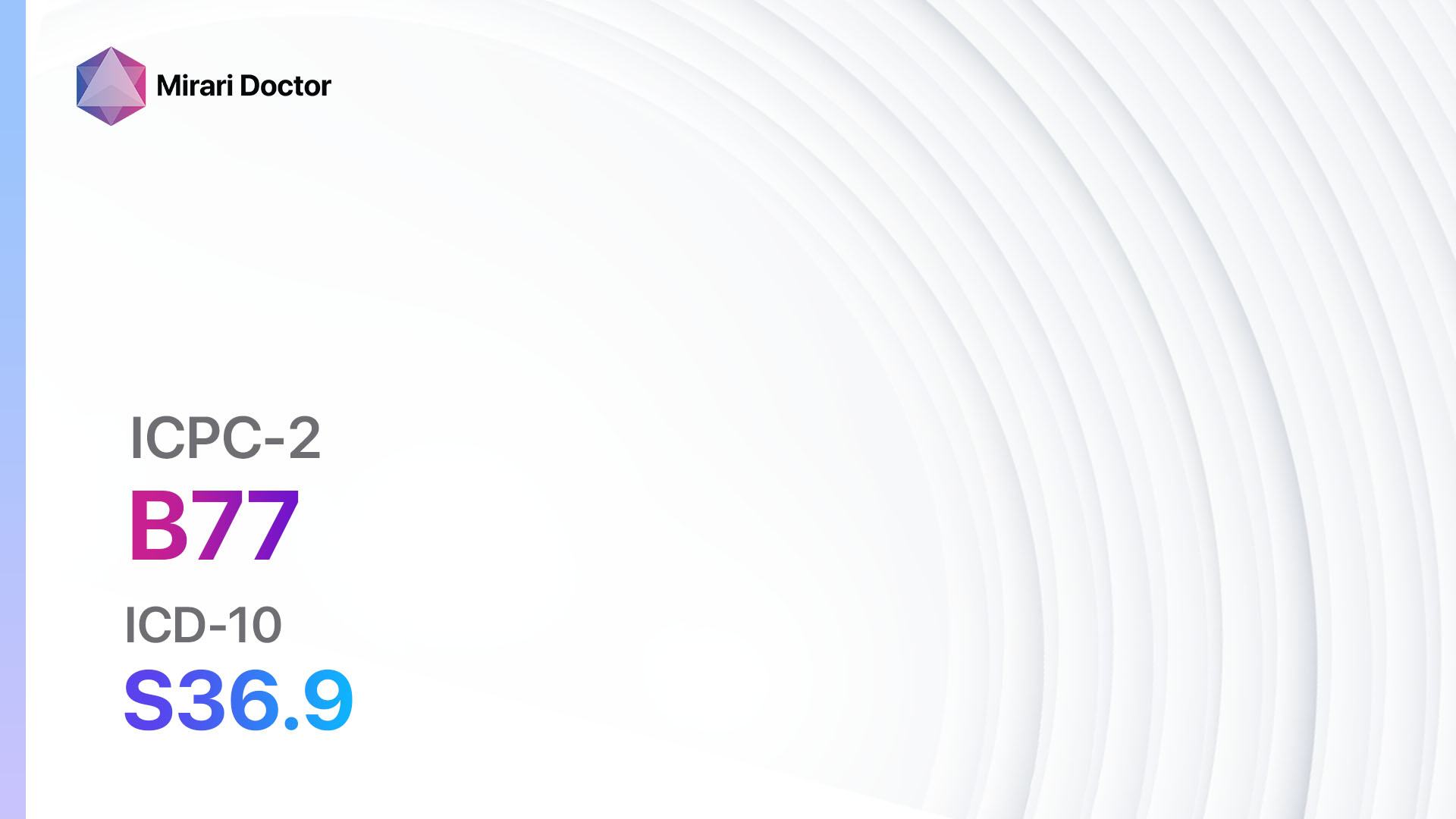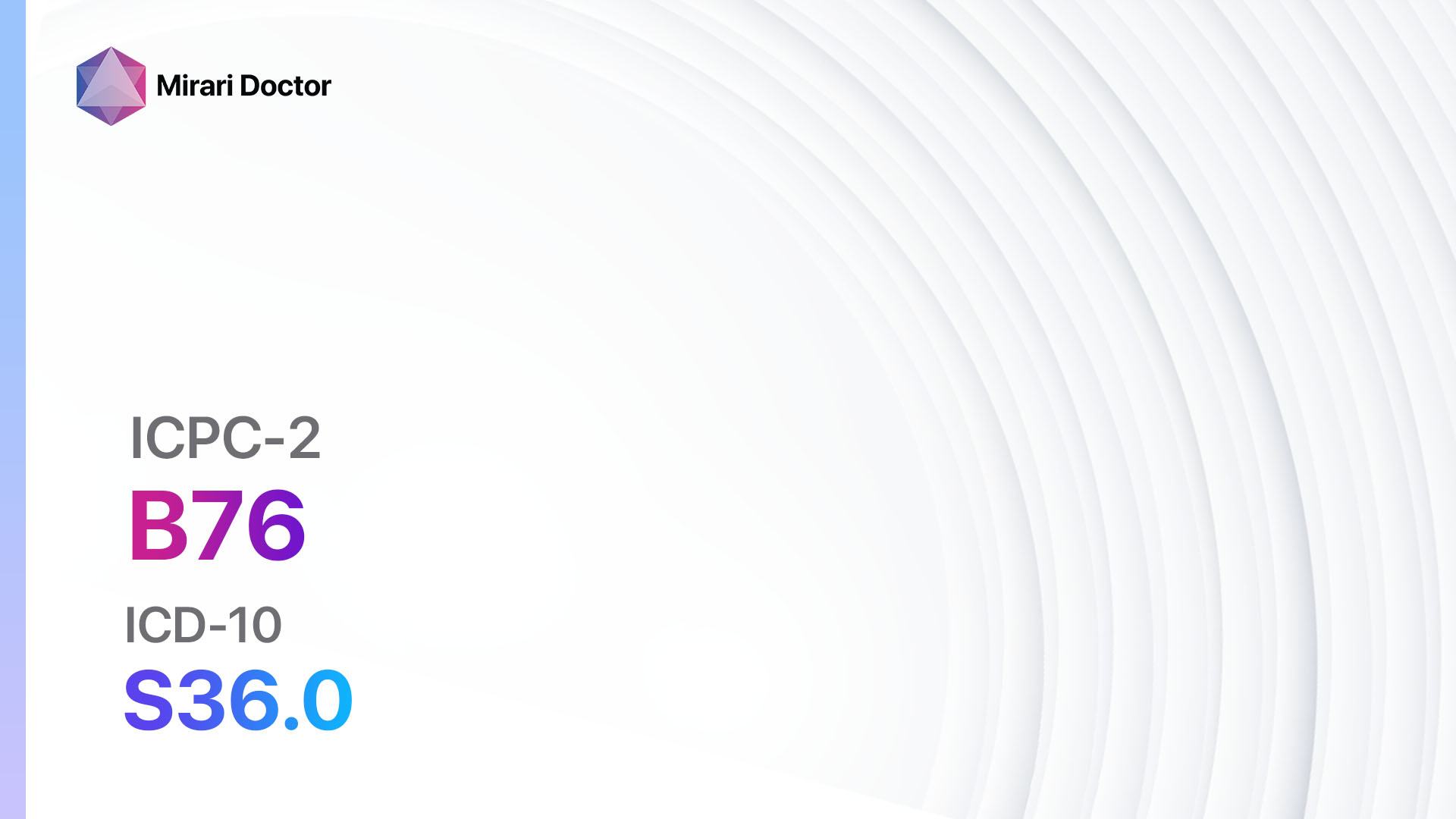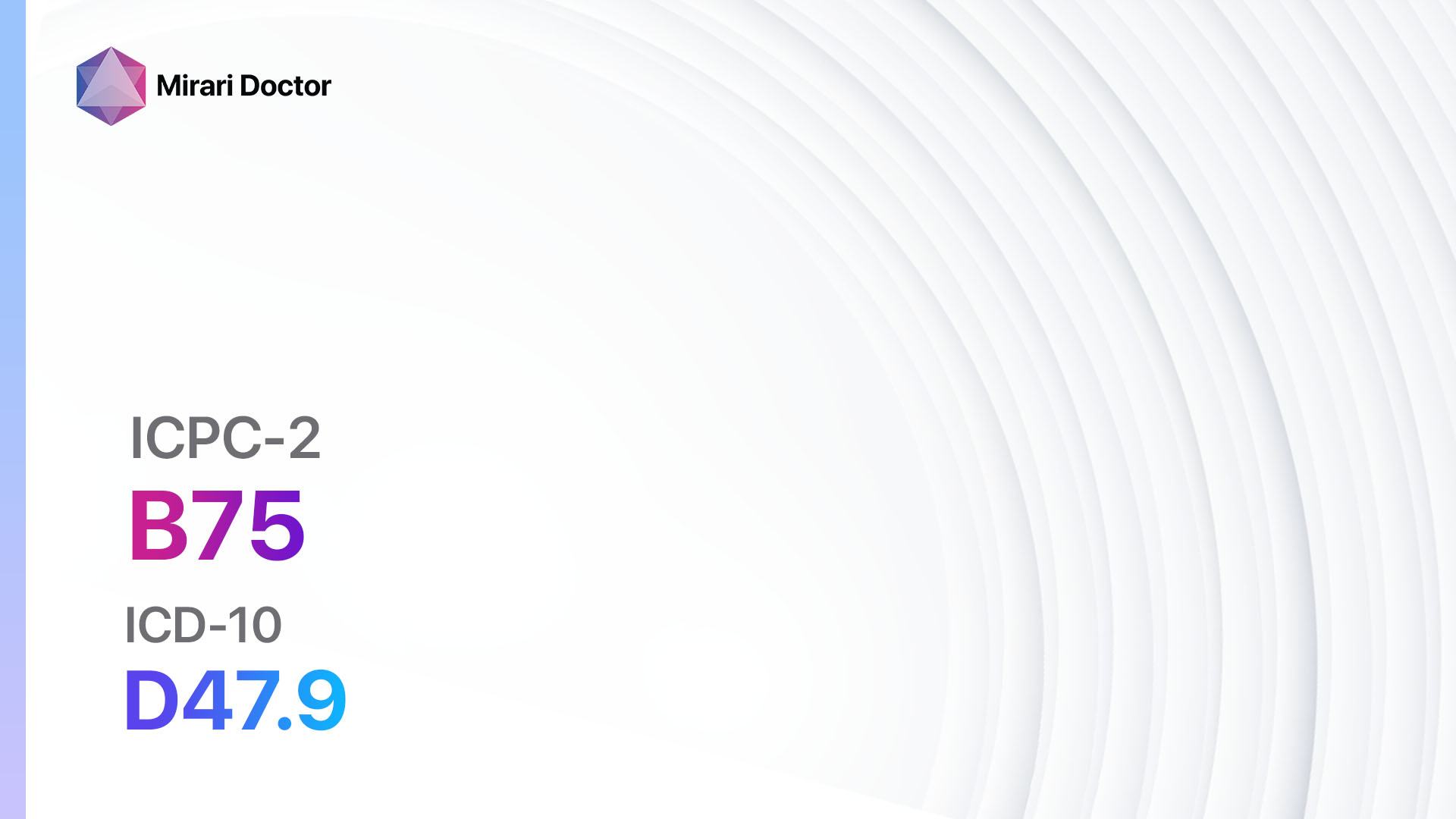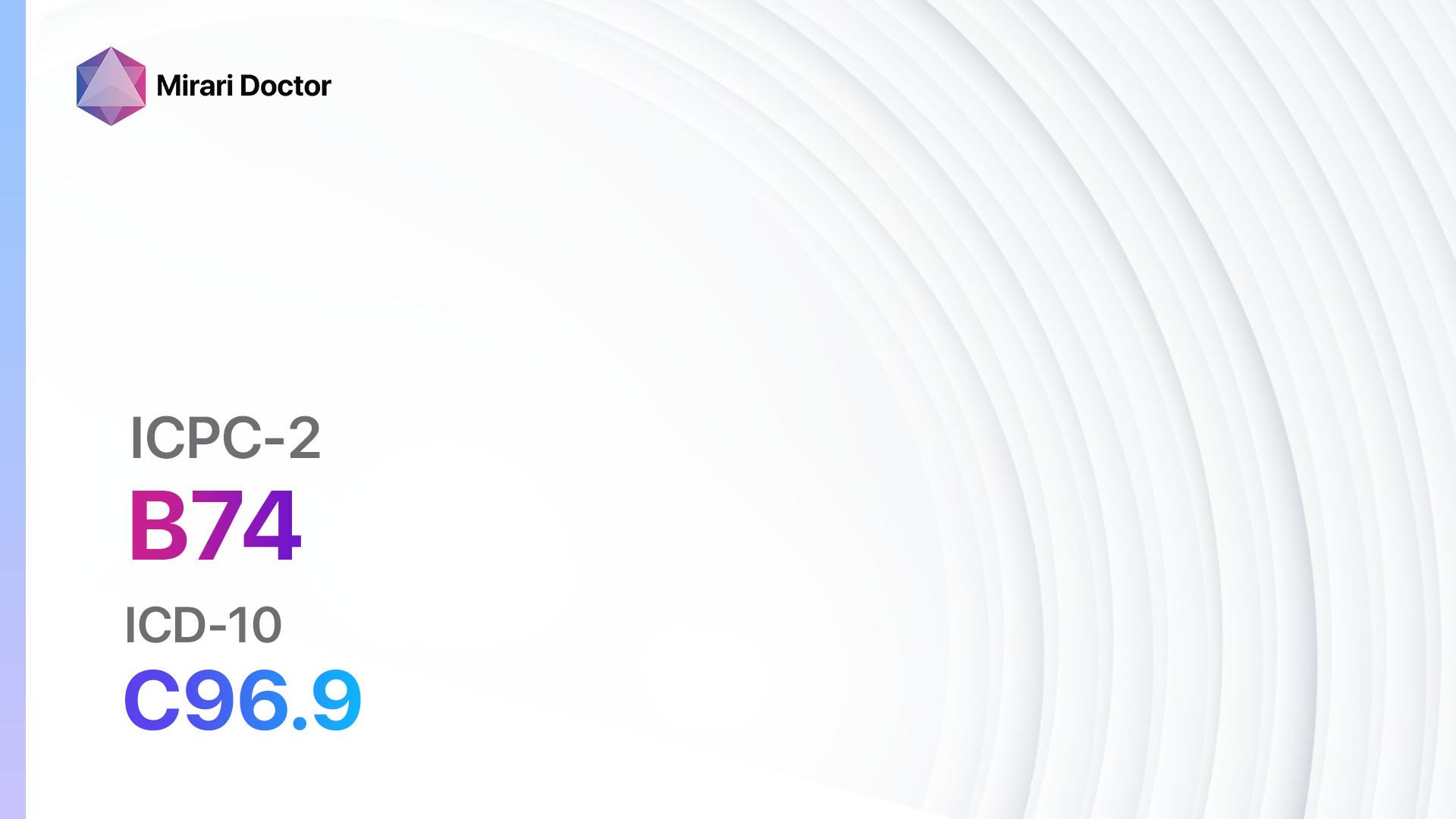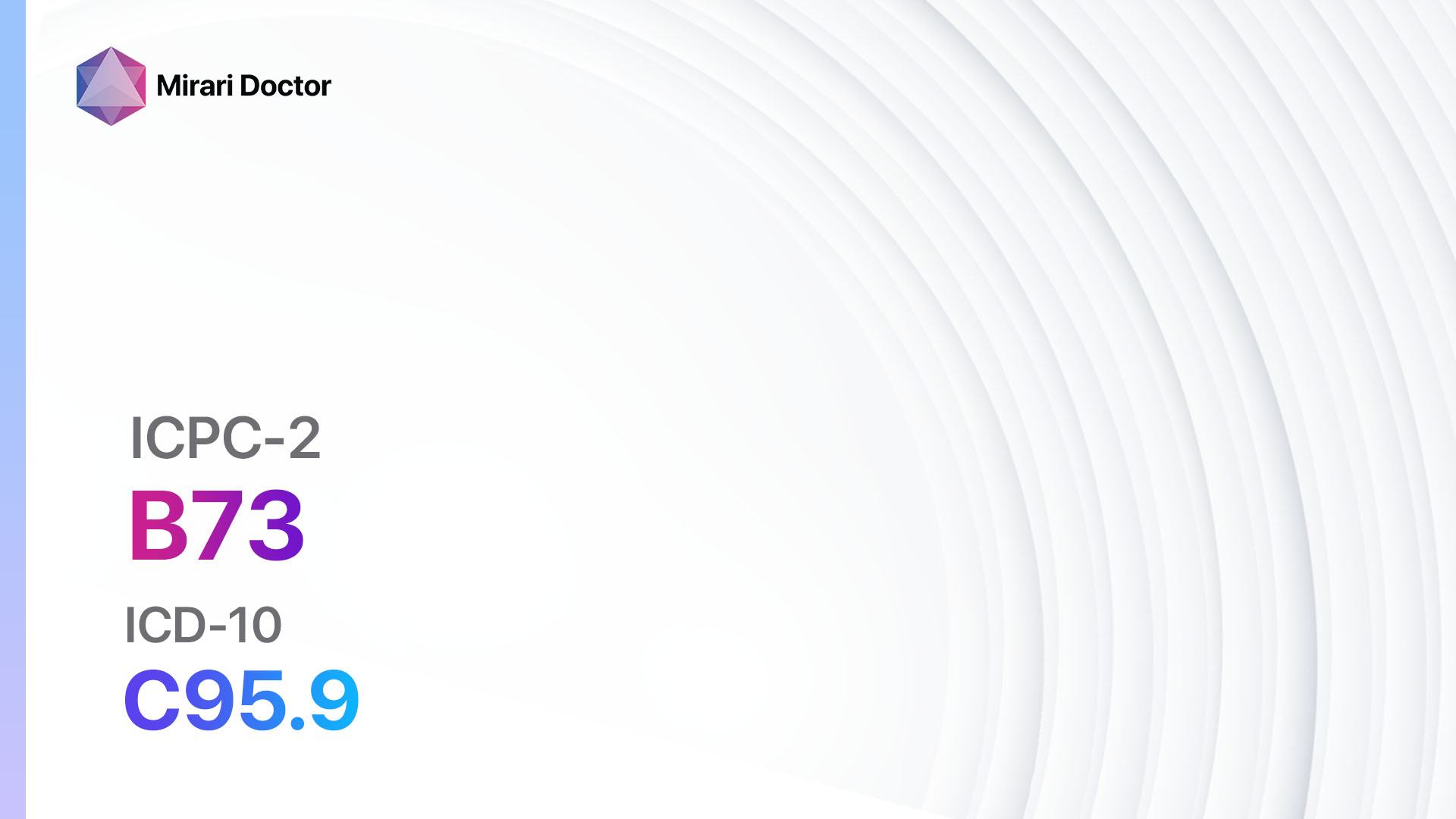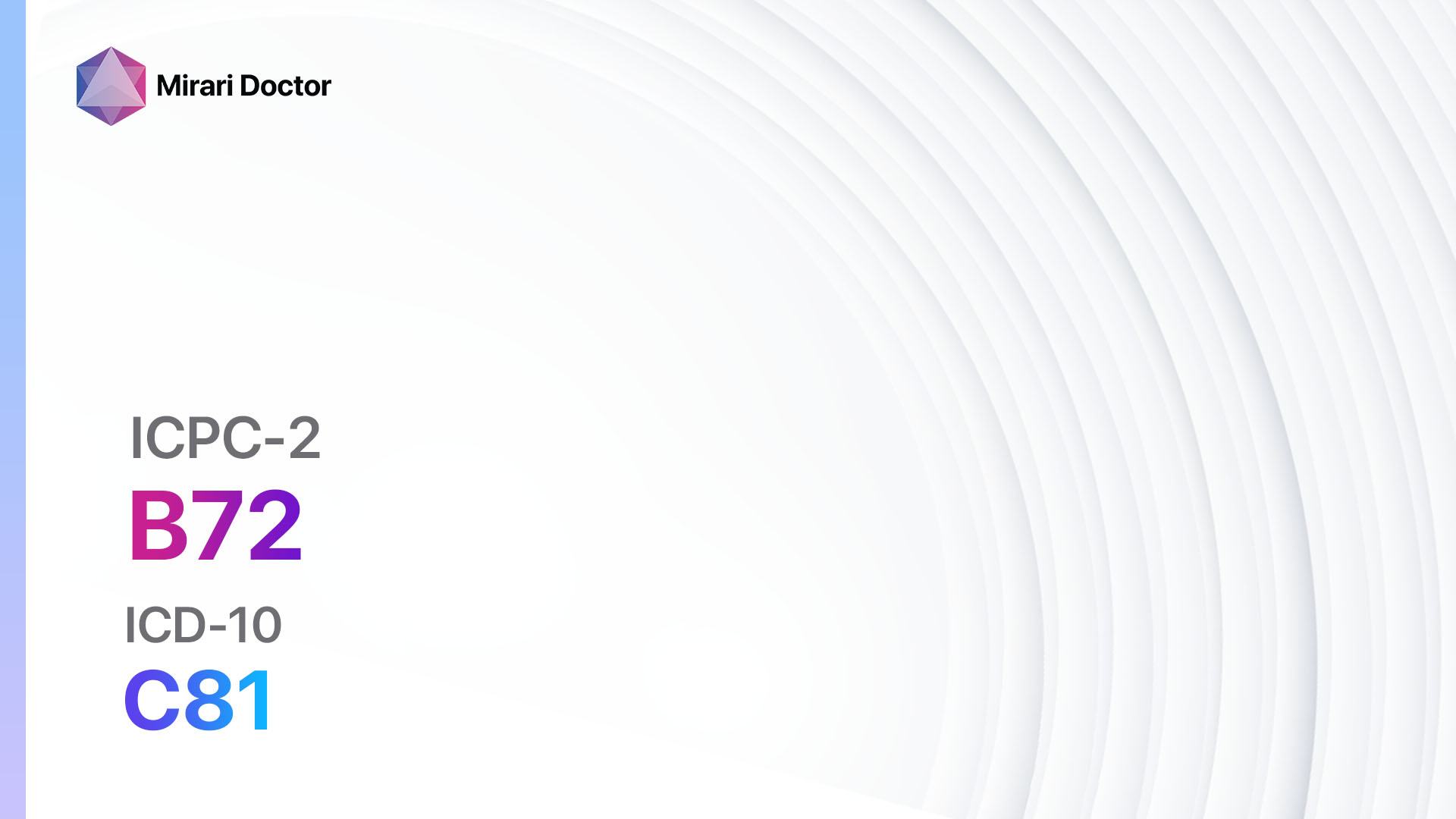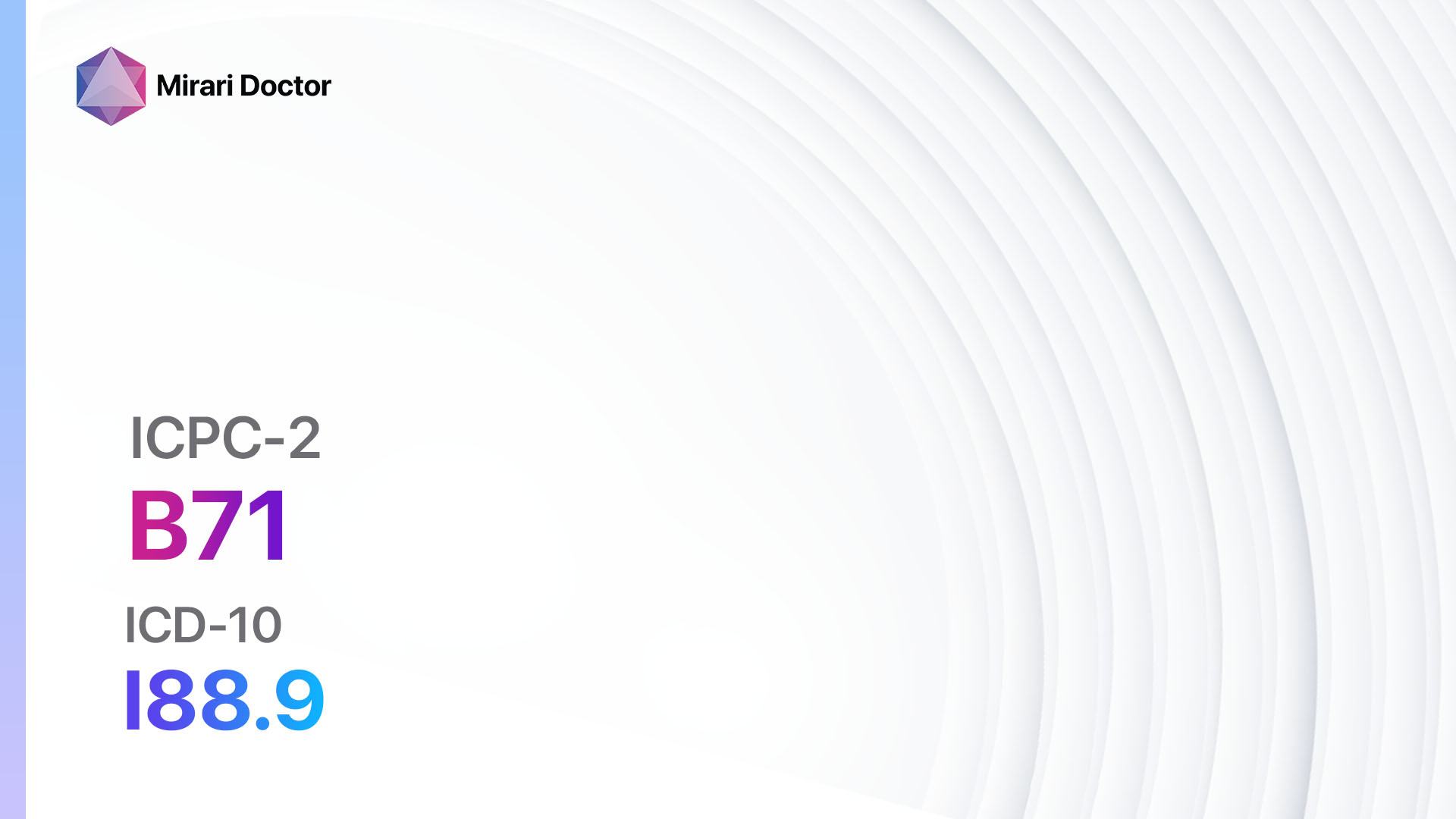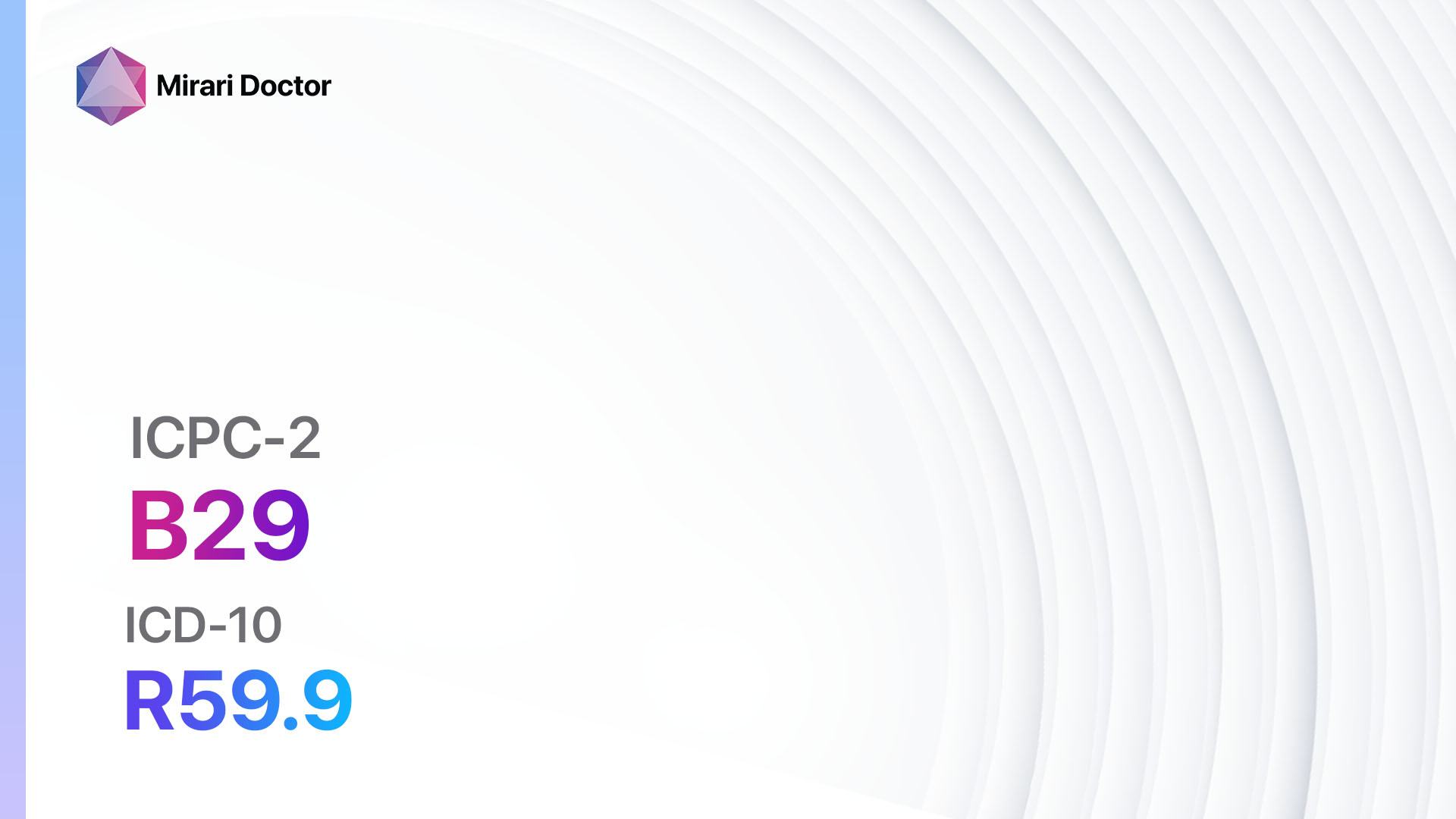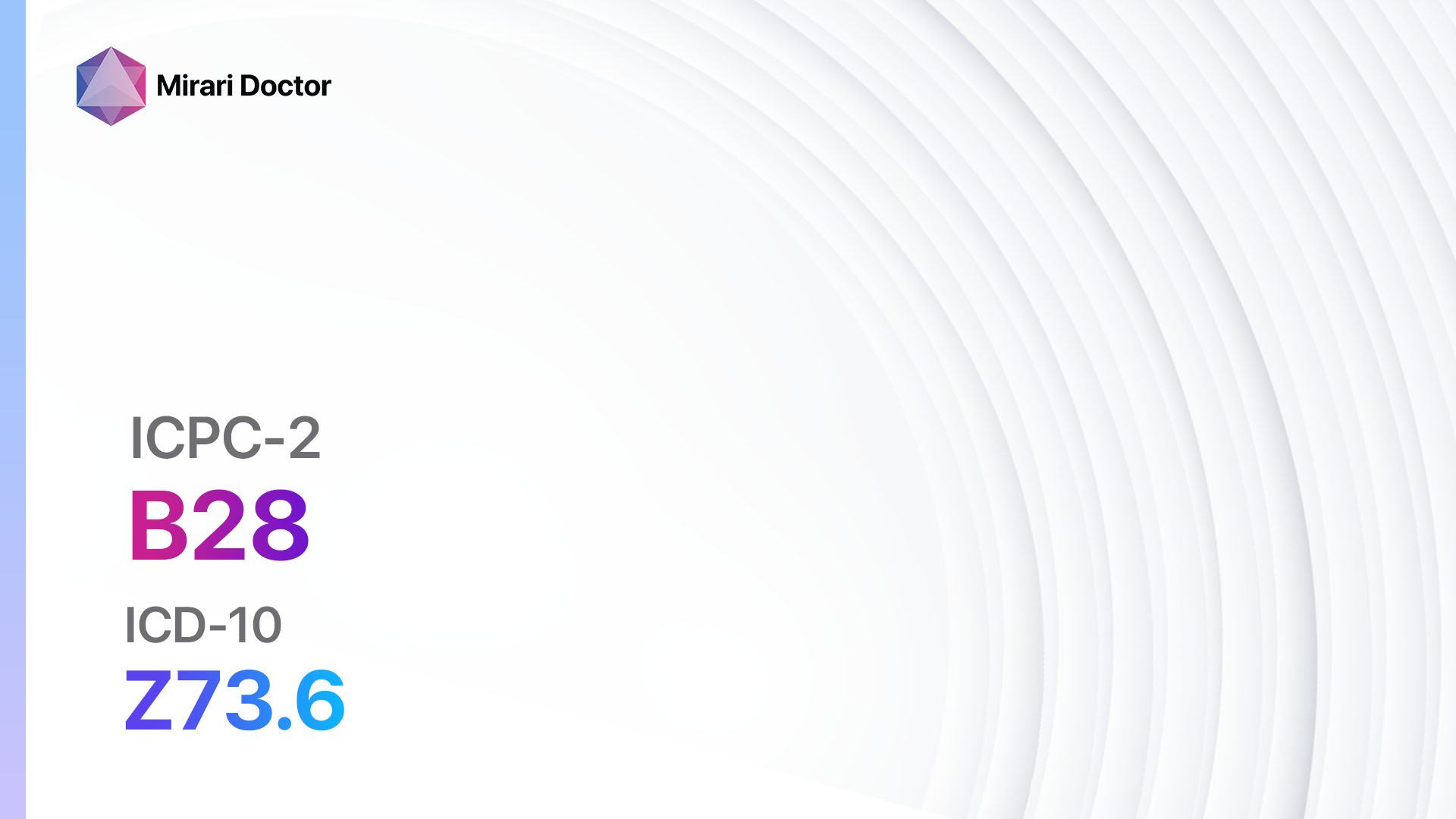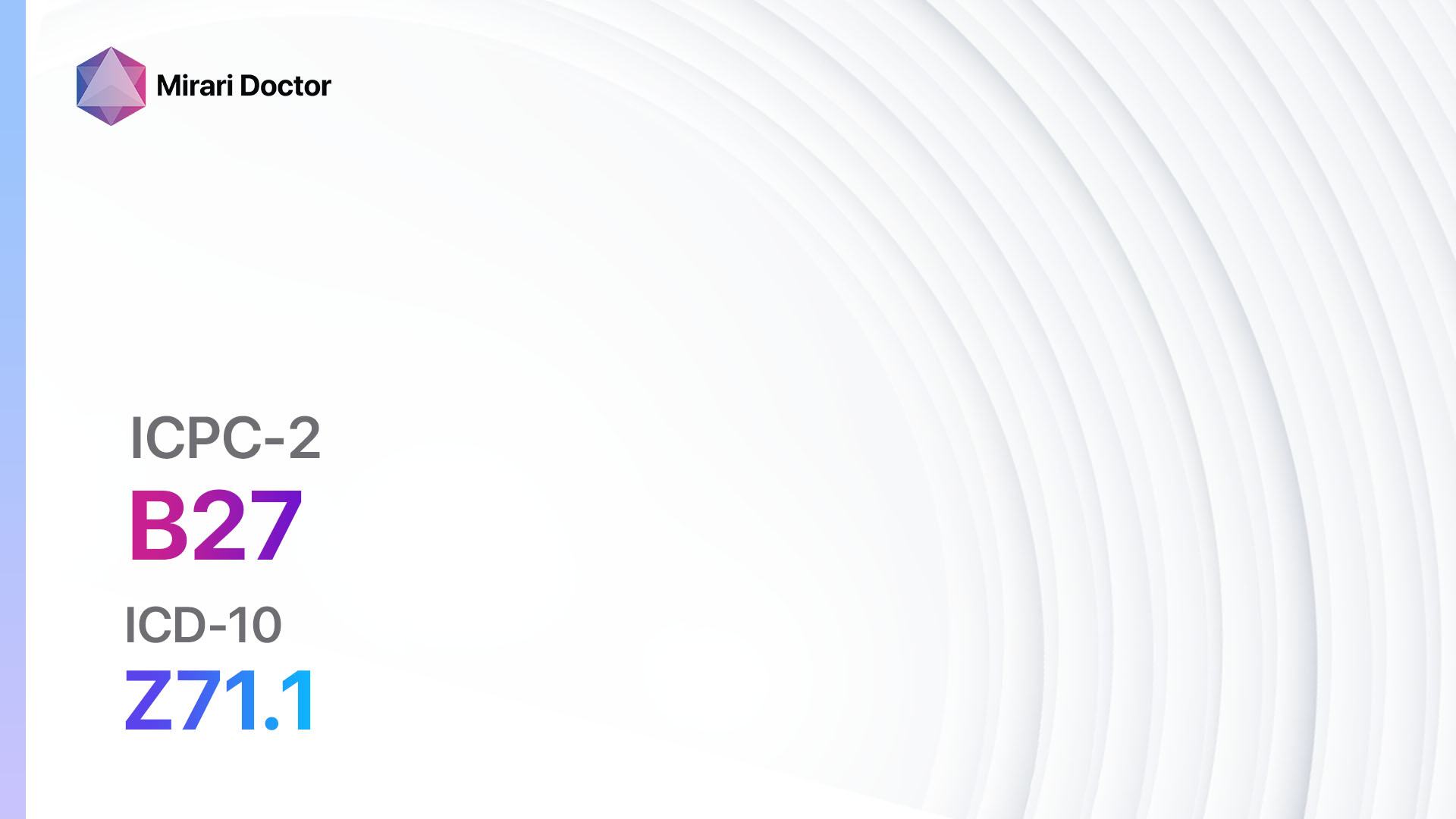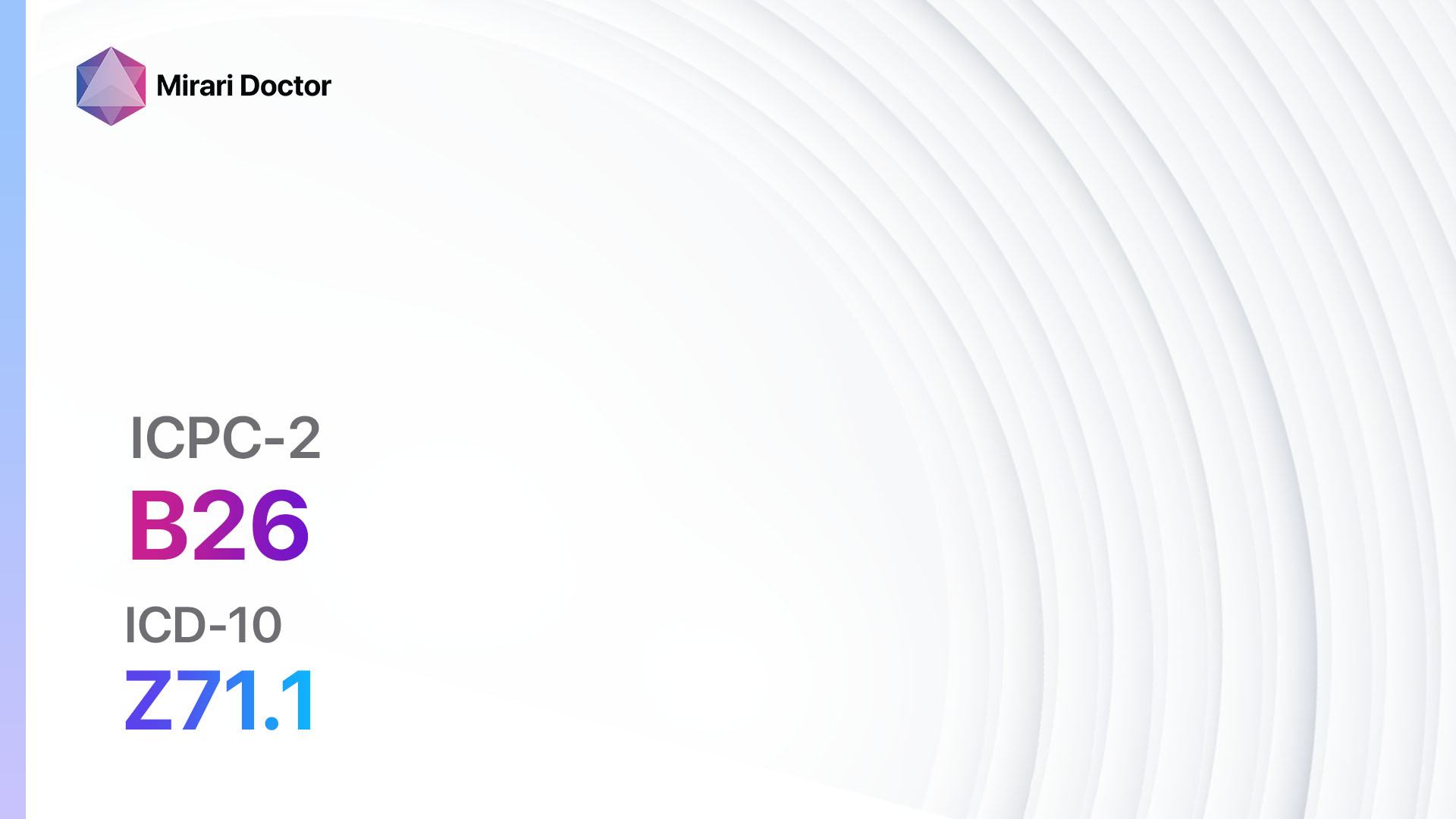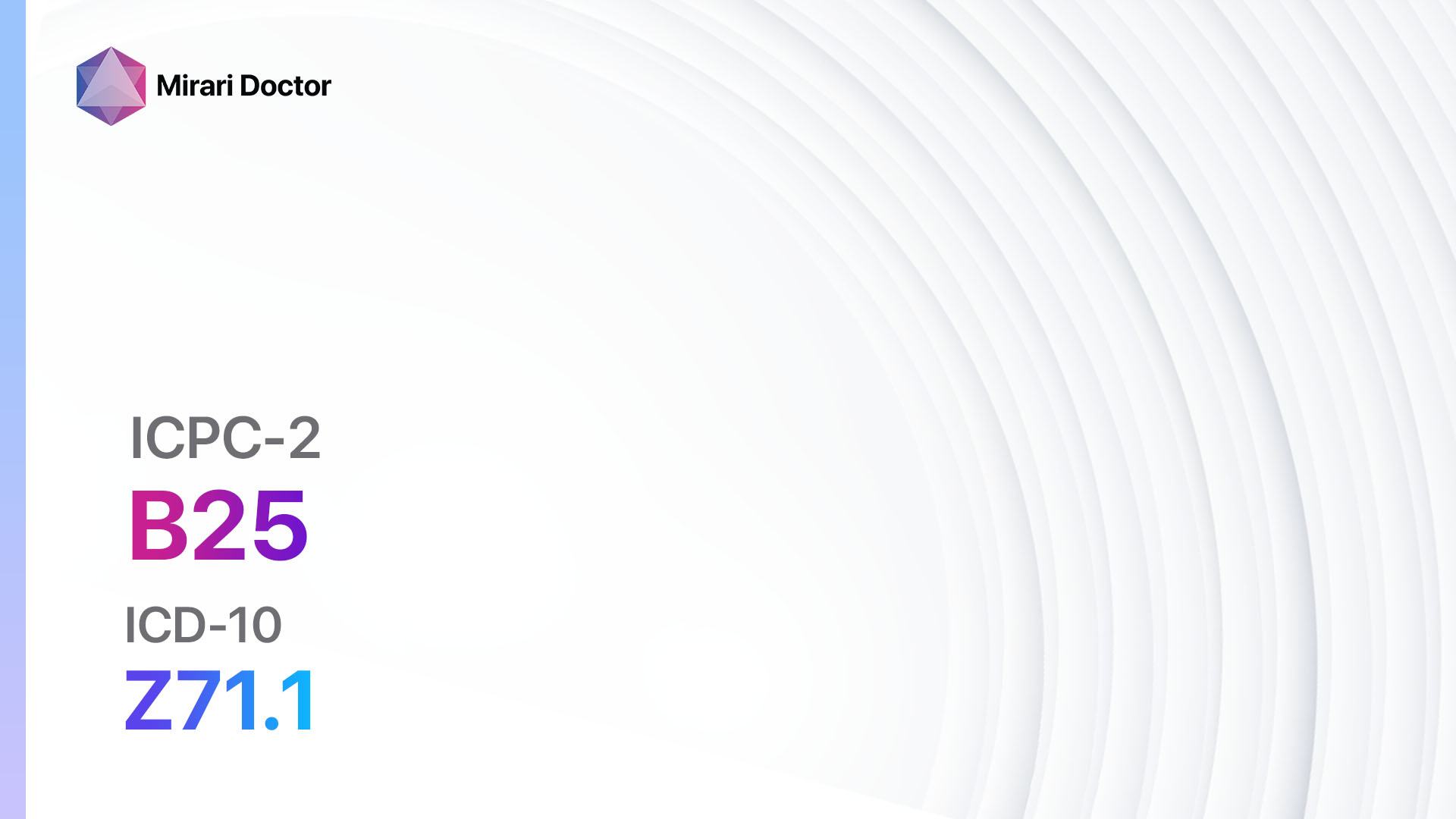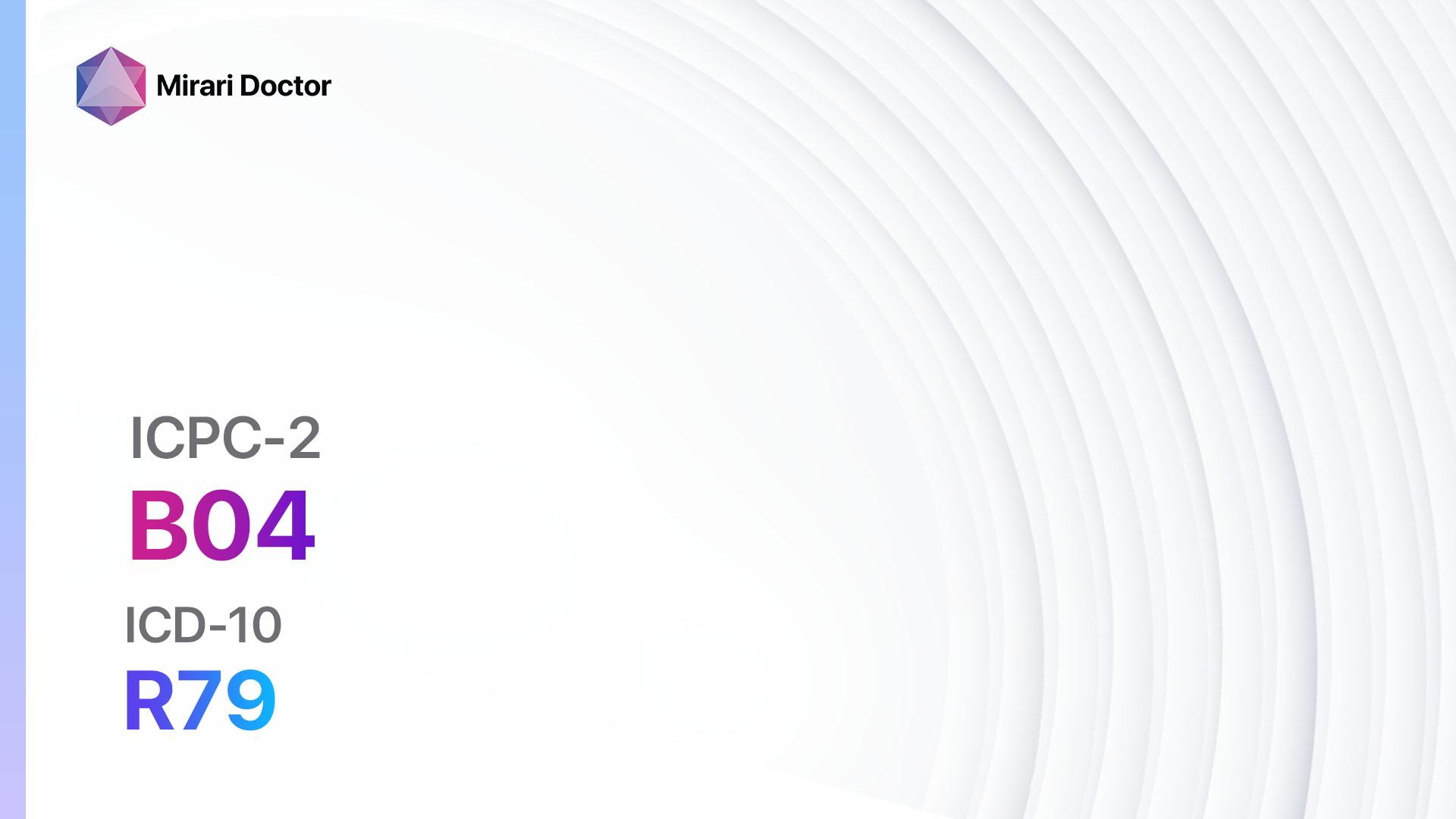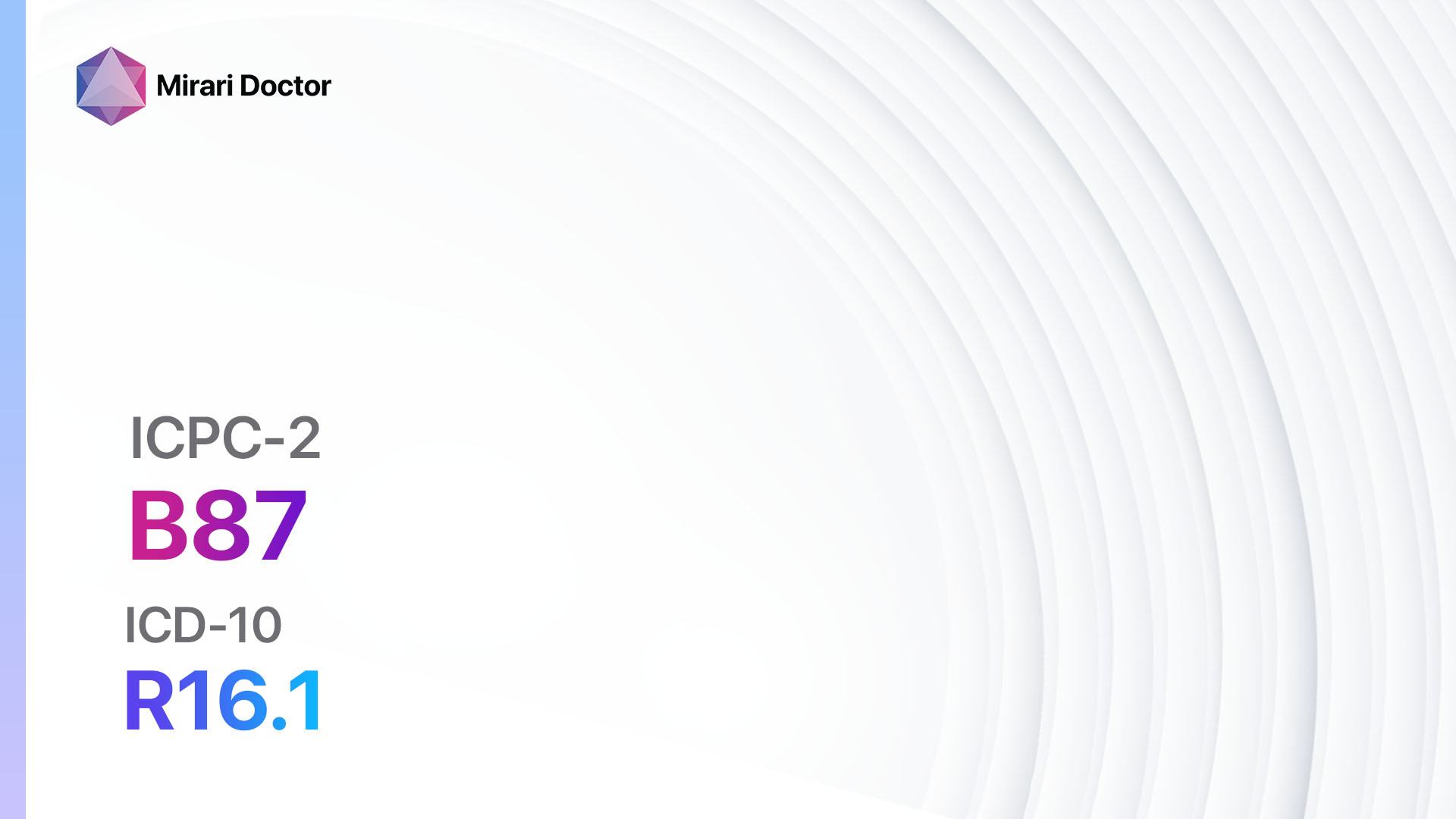
Introduction
Splenomegaly refers to the enlargement of the spleen, which is an organ located in the upper left side of the abdomen. It can be a sign of an underlying condition and may cause various symptoms[1]. The aim of this guide is to provide an overview of the symptoms, causes, diagnostic steps, possible interventions, and lifestyle interventions for splenomegaly.
Codes
- ICPC-2 Code: B87 Splenomegaly
- ICD-10 Code: R16.1 Splenomegaly, not elsewhere classified
Symptoms
- Abdominal pain or discomfort: Splenomegaly can cause pain or discomfort in the upper left side of the abdomen[2].
- Feeling of fullness: Enlargement of the spleen may lead to a sensation of fullness or early satiety[3].
- Fatigue or weakness: Splenomegaly can cause fatigue or weakness due to the increased workload on the spleen[4].
- Easy bruising or bleeding: Enlarged spleen may affect the production of blood cells, leading to a higher risk of bruising or bleeding[5].
- Recurrent infections: The spleen plays a role in the immune system, and its enlargement may increase the risk of infections[6].
Causes
- Infections: Splenomegaly can be caused by various infections, such as mononucleosis, bacterial infections, or parasitic infections[7].
- Liver diseases: Certain liver diseases, such as cirrhosis or hepatitis, can lead to splenomegaly[8].
- Blood disorders: Conditions like leukemia, lymphoma, or myelofibrosis can cause enlargement of the spleen[9].
- Inflammatory conditions: Autoimmune diseases, such as rheumatoid arthritis or lupus, may be associated with splenomegaly[10].
- Congestive heart failure: In some cases, heart failure can lead to an enlarged spleen.
Diagnostic Steps
Medical History
- Gather information about the patient’s symptoms, including the duration and severity of abdominal pain, fatigue, or other associated symptoms.
- Ask about any recent infections, liver diseases, or blood disorders.
- Inquire about any history of heart failure or autoimmune diseases.
Physical Examination
- Perform a thorough abdominal examination to assess the size and tenderness of the spleen.
- Look for signs of anemia, such as pale skin or nail beds.
- Check for signs of liver disease, such as jaundice or abdominal swelling.
Laboratory Tests
- Complete blood count (CBC): This test can help evaluate the levels of red blood cells, white blood cells, and platelets. Abnormalities may indicate an underlying cause of splenomegaly.
- Liver function tests: Assessing liver enzymes and other markers can help identify liver diseases that may be associated with splenomegaly.
- Infectious disease testing: Depending on the patient’s history and symptoms, tests for infections such as mononucleosis or bacterial infections may be necessary.
- Blood smear: A microscopic examination of a blood sample can help identify any abnormal blood cells.
Diagnostic Imaging
- Ultrasound: This non-invasive imaging technique can provide detailed images of the spleen and help determine its size and any abnormalities.
- CT scan or MRI: These imaging modalities can provide more detailed information about the spleen and surrounding structures, helping to identify the cause of splenomegaly.
- Radionuclide imaging: In some cases, a specialized scan using a radioactive tracer can be used to assess the function of the spleen.
Other Tests
- Biopsy: In certain cases, a small sample of the spleen tissue may be obtained for further analysis to determine the underlying cause of splenomegaly.
- Genetic testing: Inherited conditions, such as Gaucher’s disease or hereditary spherocytosis, may be associated with splenomegaly and can be identified through genetic testing.
Follow-up and Patient Education
- Depending on the underlying cause of splenomegaly, the patient may require regular follow-up appointments to monitor their condition.
- Educate the patient about the importance of managing the underlying condition and any lifestyle modifications that may be necessary.
Possible Interventions
Traditional Interventions
Medications:
Top 5 drugs for Splenomegaly:
- Antibiotics (e.g., Amoxicillin, Ciprofloxacin):
- Cost: Generic versions can be $3-$50/month.
- Contraindications: Allergy to antibiotics, severe liver disease.
- Side effects: Nausea, diarrhea, allergic reactions.
- Severe side effects: Severe allergic reactions, tendon rupture.
- Drug interactions: Warfarin, oral contraceptives.
- Warning: Finish the full course of antibiotics as prescribed.
- Corticosteroids (e.g., Prednisone, Dexamethasone):
- Cost: Generic versions can be $5-$50/month.
- Contraindications: Active infections, uncontrolled diabetes.
- Side effects: Increased appetite, weight gain, mood changes.
- Severe side effects: Increased risk of infections, osteoporosis.
- Drug interactions: Nonsteroidal anti-inflammatory drugs (NSAIDs), anticoagulants.
- Warning: Taper the dose gradually when discontinuing corticosteroids.
- Immunosuppressants (e.g., Azathioprine, Methotrexate):
- Cost: Generic versions can be $10-$100/month.
- Contraindications: Active infections, pregnancy.
- Side effects: Nausea, hair loss, increased risk of infections.
- Severe side effects: Bone marrow suppression, liver toxicity.
- Drug interactions: Allopurinol, ACE inhibitors.
- Warning: Regular monitoring of blood counts and liver function is required.
- Antiviral medications (e.g., Acyclovir, Valacyclovir):
- Cost: Generic versions can be $10-$50/month.
- Contraindications: Allergy to antiviral medications, severe kidney disease.
- Side effects: Nausea, headache, dizziness.
- Severe side effects: Severe allergic reactions, kidney damage.
- Drug interactions: Probenecid, other antiviral medications.
- Warning: Take the medication as prescribed and complete the full course.
- Chemotherapy agents (e.g., Rituximab, Cyclophosphamide):
- Cost: Varies depending on the specific medication and treatment regimen.
- Contraindications: Pregnancy, severe infections.
- Side effects: Nausea, hair loss, increased risk of infections.
- Severe side effects: Bone marrow suppression, organ damage.
- Drug interactions: Live vaccines, other chemotherapy agents.
- Warning: Regular monitoring of blood counts and organ function is required.
Alternative Drugs:
- Hydroxyurea: May be used in certain cases of splenomegaly associated with myeloproliferative disorders.
- Danazol: Can be considered for the treatment of splenomegaly associated with hereditary angioedema.
- Interferon-alpha: May be used in certain cases of splenomegaly associated with viral infections.
Surgical Procedures:
- Splenectomy: Surgical removal of the spleen may be considered in cases of severe or refractory splenomegaly. Cost: $20,000 to $50,000.
- Partial splenic embolization: This minimally invasive procedure involves blocking the blood supply to a portion of the spleen, reducing its size. Cost: $10,000 to $30,000.
Alternative Interventions
- Acupuncture: May help alleviate symptoms associated with splenomegaly, such as pain or fatigue. Cost: $60-$120 per session.
- Herbal supplements: Certain herbs, such as milk thistle or dandelion root, may have potential benefits for liver health and may indirectly help with splenomegaly. Cost: Varies depending on the specific supplement.
- Meditation or relaxation techniques: These practices can help reduce stress and improve overall well-being. Cost: Varies depending on the specific practice.
- Yoga or tai chi: These mind-body exercises can help improve flexibility, strength, and overall physical and mental health. Cost: Varies depending on the specific class or instructor.
Lifestyle Interventions
- Healthy diet: Encourage the patient to follow a balanced diet rich in fruits, vegetables, whole grains, and lean proteins. Cost: Varies depending on individual food choices.
- Regular exercise: Physical activity can help improve overall health and may indirectly benefit splenomegaly. Cost: Varies depending on individual preferences (e.g., gym membership, home exercise equipment).
- Stress management: Techniques such as deep breathing, meditation, or mindfulness can help reduce stress and support overall well-being. Cost: Varies depending on the specific practice.
- Adequate sleep: Getting enough sleep is essential for overall health and may indirectly benefit splenomegaly. Cost: Varies depending on individual sleep habits and preferences.
It is important to note that the cost ranges provided are approximate and may vary depending on the location and availability of the interventions. It is recommended to consult with healthcare professionals for personalized treatment options and cost estimates.
Mirari Cold Plasma Alternative Intervention
Understanding Mirari Cold Plasma
- Safe and Non-Invasive Treatment: Mirari Cold Plasma is a safe and non-invasive treatment option for various skin conditions. It does not require incisions, minimizing the risk of scarring, bleeding, or tissue damage.
- Efficient Extraction of Foreign Bodies: Mirari Cold Plasma facilitates the removal of foreign bodies from the skin by degrading and dissociating organic matter, allowing easier access and extraction.
- Pain Reduction and Comfort: Mirari Cold Plasma has a local analgesic effect, providing pain relief during the treatment, making it more comfortable for the patient.
- Reduced Risk of Infection: Mirari Cold Plasma has antimicrobial properties, effectively killing bacteria and reducing the risk of infection.
- Accelerated Healing and Minimal Scarring: Mirari Cold Plasma stimulates wound healing and tissue regeneration, reducing healing time and minimizing the formation of scars.
Mirari Cold Plasma Prescription
Video instructions for using Mirari Cold Plasma Device – B87 Splenomegaly (ICD-10:R16.1)
| Mild | Moderate | Severe |
| Mode setting: 1 (Infection) Location: 3 (Kidney, Liver & Spleen) Morning: 15 minutes, Evening: 15 minutes |
Mode setting: 1 (Infection) Location: 3 (Kidney, Liver & Spleen) Morning: 30 minutes, Lunch: 30 minutes, Evening: 30 minutes |
Mode setting: 1 (Infection) Location: 3 (Kidney, Liver & Spleen) Morning: 30 minutes, Lunch: 30 minutes, Evening: 30 minutes |
| Mode setting: 2 (Wound Healing) Location: 3 (Kidney, Liver & Spleen) Morning: 15 minutes, Evening: 15 minutes |
Mode setting: 2 (Wound Healing) Location: 3 (Kidney, Liver & Spleen) Morning: 30 minutes, Lunch: 30 minutes, Evening: 30 minutes |
Mode setting: 2 (Wound Healing) Location: 3 (Kidney, Liver & Spleen) Morning: 30 minutes, Lunch: 30 minutes, Evening: 30 minutes |
| Mode setting: 7 (Immunotherapy) Location: 1 (Sacrum) Morning: 15 minutes, Evening: 15 minutes |
Mode setting: 7 (Immunotherapy) Location: 1 (Sacrum) Morning: 30 minutes, Lunch: 30 minutes, Evening: 30 minutes |
Mode setting: 7 (Immunotherapy) Location: 1 (Sacrum) Morning: 30 minutes, Lunch: 30 minutes, Evening: 30 minutes |
| Total Morning: 45 minutes approx. $7.50 USD, Evening: 45 minutes approx. $7.50 USD |
Total Morning: 90 minutes approx. $15 USD, Lunch: 90 minutes approx. $15 USD, Evening: 90 minutes approx. $15 USD |
Total Morning: 90 minutes approx. $15 USD, Lunch: 90 minutes approx. $15 USD, Evening: 90 minutes approx. $15 USD |
| Usual treatment for 7-60 days approx. $105 USD – $900 USD | Usual treatment for 6-8 weeks approx. $1,890 USD – $2,520 USD |
Usual treatment for 3-6 months approx. $4,050 USD – $8,100 USD
|
 |
|
Use the Mirari Cold Plasma device to treat Splenomegaly effectively.
WARNING: MIRARI COLD PLASMA IS DESIGNED FOR THE HUMAN BODY WITHOUT ANY ARTIFICIAL OR THIRD PARTY PRODUCTS. USE OF OTHER PRODUCTS IN COMBINATION WITH MIRARI COLD PLASMA MAY CAUSE UNPREDICTABLE EFFECTS, HARM OR INJURY. PLEASE CONSULT A MEDICAL PROFESSIONAL BEFORE COMBINING ANY OTHER PRODUCTS WITH USE OF MIRARI.
Step 1: Cleanse the Skin
- Start by cleaning the affected area of the skin with a gentle cleanser or mild soap and water. Gently pat the area dry with a clean towel.
Step 2: Prepare the Mirari Cold Plasma device
- Ensure that the Mirari Cold Plasma device is fully charged or has fresh batteries as per the manufacturer’s instructions. Make sure the device is clean and in good working condition.
- Switch on the Mirari device using the power button or by following the specific instructions provided with the device.
- Some Mirari devices may have adjustable settings for intensity or treatment duration. Follow the manufacturer’s instructions to select the appropriate settings based on your needs and the recommended guidelines.
Step 3: Apply the Device
- Place the Mirari device in direct contact with the affected area of the skin. Gently glide or hold the device over the skin surface, ensuring even coverage of the area experiencing.
- Slowly move the Mirari device in a circular motion or follow a specific pattern as indicated in the user manual. This helps ensure thorough treatment coverage.
Step 4: Monitor and Assess:
- Keep track of your progress and evaluate the effectiveness of the Mirari device in managing your Splenomegaly. If you have any concerns or notice any adverse reactions, consult with your health care professional.
Note
This guide is for informational purposes only and should not replace the advice of a medical professional. Always consult with your healthcare provider or a qualified medical professional for personal advice, diagnosis, or treatment. Do not solely rely on the information presented here for decisions about your health. Use of this information is at your own risk. The authors of this guide, nor any associated entities or platforms, are not responsible for any potential adverse effects or outcomes based on the content.
Mirari Cold Plasma System Disclaimer
- Purpose: The Mirari Cold Plasma System is a Class 2 medical device designed for use by trained healthcare professionals. It is registered for use in Thailand and Vietnam. It is not intended for use outside of these locations.
- Informational Use: The content and information provided with the device are for educational and informational purposes only. They are not a substitute for professional medical advice or care.
- Variable Outcomes: While the device is approved for specific uses, individual outcomes can differ. We do not assert or guarantee specific medical outcomes.
- Consultation: Prior to utilizing the device or making decisions based on its content, it is essential to consult with a Certified Mirari Tele-Therapist and your medical healthcare provider regarding specific protocols.
- Liability: By using this device, users are acknowledging and accepting all potential risks. Neither the manufacturer nor the distributor will be held accountable for any adverse reactions, injuries, or damages stemming from its use.
- Geographical Availability: This device has received approval for designated purposes by the Thai and Vietnam FDA. As of now, outside of Thailand and Vietnam, the Mirari Cold Plasma System is not available for purchase or use.
References
- Pozo AL, Godfrey EM, Bowles KM. Splenomegaly: investigation, diagnosis and management. Blood Rev. 2009;23(3):105-111. doi:10.1016/j.blre.2008.10.001
- Luo EJ, Levitt L. Massive splenomegaly. Hosp Physician. 2008;44:31-38.
- O’Reilly RA. Splenomegaly in 2,505 patients at a large university medical center from 1913 to 1995. 1963 to 1995: 449 patients. West J Med. 1998;169(2):88-97.
- Poulin EC, Mamazza J, Schlachta CM. Splenic artery embolization before laparoscopic splenectomy. An update. Surg Endosc. 1998;12(6):870-875. doi:10.1007/s004649900724
- Eichner ER. Splenic function: normal, too much and too little. Am J Med. 1979;66(2):311-320. doi:10.1016/0002-9343(79)90554-0
- William BM, Corazza GR. Hyposplenism: a comprehensive review. Part I: basic concepts and causes. Hematology. 2007;12(1):1-13. doi:10.1080/10245330600938422
- Allison AC. Protection afforded by sickle-cell trait against subtertian malareal infection. Br Med J. 1954;1(4857):290-294. doi:10.1136/bmj.1.4857.290
- Curro G, Meo A, Ippolito D, Pusiol A, Cucinotta E. Asymptomatic cholelithiasis in children with sickle cell anemia: early or delayed cholecystectomy?. Ann Surg. 2007;245(1):126-129. doi:10.1097/01.sla.0000242716.66878.23
- Mesa RA, Silverstein MN, Jacobsen SJ, Wollan PC, Tefferi A. Population-based incidence and survival figures in essential thrombocythemia and agnogenic myeloid metaplasia: an Olmsted County Study, 1976-1995. Am J Hematol. 1999;61(1):10-15.
- Fishman D, Isenberg DA. Splenic involvement in rheumatic diseases. Semin Arthritis Rheum. 1997;27(3):141-155. doi:10.1016/s0049-0172(97)80010-0
Related articles
Made in USA


